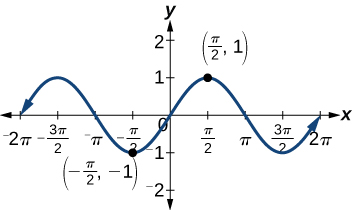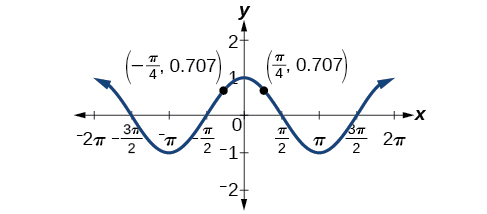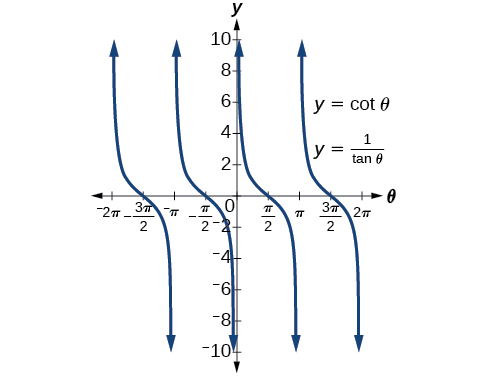7.1: Solving Trigonometric Equations with Identities
( \newcommand{\kernel}{\mathrm{null}\,}\)
Verifying the Fundamental Trigonometric Identities
Identities enable us to simplify complicated expressions. They are the basic tools of trigonometry used in solving trigonometric equations, just as factoring, finding common denominators, and using special formulas are the basic tools of solving algebraic equations. In fact, we use algebraic techniques constantly to simplify trigonometric expressions. Basic properties and formulas of algebra, such as the difference of squares formula and the perfect squares formula, will simplify the work involved with trigonometric expressions and equations. We already know that all of the trigonometric functions are related because they all are defined in terms of the unit circle. Consequently, any trigonometric identity can be written in many ways.
To verify the trigonometric identities, we usually start with the more complicated side of the equation and essentially rewrite the expression until it has been transformed into the same expression as the other side of the equation. Sometimes we have to factor expressions, expand expressions, find common denominators, or use other algebraic strategies to obtain the desired result. In this first section, we will work with the fundamental identities: the Pythagorean identities, the even-odd identities, the reciprocal identities, and the quotient identities.
We will begin with the Pythagorean identities (Table
The second and third identities can be obtained by manipulating the first. The identity
Prove:
Similarly,
Recall that we determined which trigonometric functions are odd and which are even. The next set of fundamental identities is the set of even-odd identities. The even-odd identities relate the value of a trigonometric function at a given angle to the value of the function at the opposite angle (Table
Recall that an odd function is one in which
This is shown in Figure

Recall that an even function is one in which
The graph of an even function is symmetric about the y-axis. The cosine function is an even function because
See Figure

For all
- Since
- Since
The other even-odd identities follow from the even and odd nature of the sine and cosine functions. For example, consider the tangent identity,
Tangent is therefore an odd function, which means that
The cotangent identity,
Cotangent is therefore an odd function, which means that
The cosecant function is the reciprocal of the sine function, which means that the cosecant of a negative angle will be interpreted as
The cosecant function is therefore odd.
Finally, the secant function is the reciprocal of the cosine function, and the secant of a negative angle is interpreted as
The secant function is therefore even.
To sum up, only two of the trigonometric functions, cosine and secant, are even. The other four functions are odd, verifying the even-odd identities.
The next set of fundamental identities is the set of reciprocal identities, which, as their name implies, relate trigonometric functions that are reciprocals of each other. (Table
The final set of identities is the set of quotient identities, which define relationships among certain trigonometric functions and can be very helpful in verifying other identities (Table
The reciprocal and quotient identities are derived from the definitions of the basic trigonometric functions.
The Pythagorean identities are based on the properties of a right triangle.
The even-odd identities relate the value of a trigonometric function at a given angle to the value of the function at the opposite angle.
The reciprocal identities define reciprocals of the trigonometric functions.
The quotient identities define the relationship among the trigonometric functions.
Graph both sides of the identity
Solution
See Figure

Analysis
We see only one graph because both expressions generate the same image. One is on top of the other. This is a good way to prove any identity. If both expressions give the same graph, then they must be identities.
- Work on one side of the equation. It is usually better to start with the more complex side, as it is easier to simplify than to build.
- Look for opportunities to factor expressions, square a binomial, or add fractions.
- Noting which functions are in the final expression, look for opportunities to use the identities and make the proper substitutions.
- If these steps do not yield the desired result, try converting all terms to sines and cosines.
Verify
Solution
We will start on the left side, as it is the more complicated side:
Analysis
This identity was fairly simple to verify, as it only required writing
Verify the following equivalency using the even-odd identities:
Solution
Working on the left side of the equation, we have
Since


